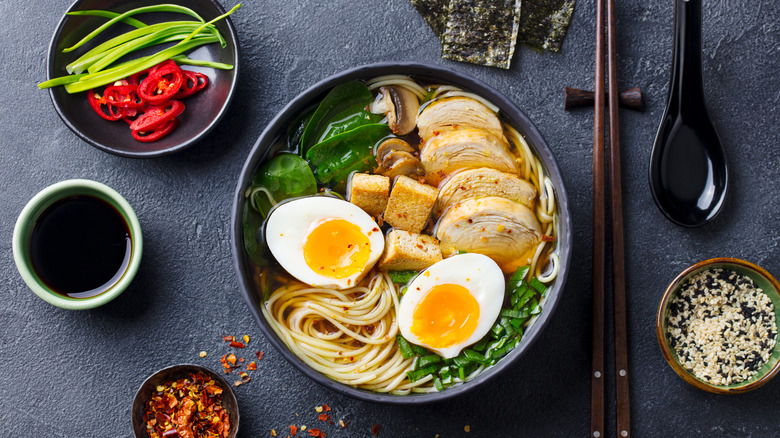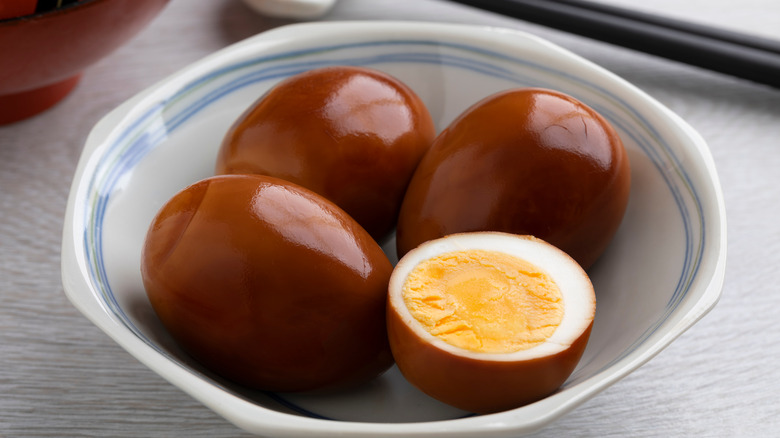The Marinating Hack That Will Take Eggs To The Next Level
Often found atop steaming bowls of ramen, shoyu tamago, or Japanese soy sauce eggs, are surprisingly easy to make at home — and the technique will leave your usual hard-boiled eggs transformed. Keep a batch on hand to elevate everything from instant noodles to your afternoon snack.
According to The Spruce Eats, shoyu tamago are eggs that have been either soft- or hard-boiled before being marinated in soy sauce. In addition to giving them a deep brown hue, the soy sauce seasons the eggs and leaves them equal parts salty, savory, creamy, and complex.
As the outlet reports, in Japan, shoyu tamago are often enjoyed as a snack. And while certainly delicious on their own, these soy sauce eggs are also a welcome addition to breakfast dishes, noodles, toast, and anything else that could use an additional layer of flavor. Christina Tosi of Momofuku Milk Bar also suggests incorporating shoyu tamago into pasta dishes, salads, and even Eggs Benedict (per Food52).
How to marinate eggs to make shoyu tamago at home
Recipes for shoyu tamago all follow the same general procedure, requiring you to marinate peeled, boiled eggs in soy sauce or a soy sauce-based solution. However, the duration of their soak and the ingredients in their marinade can vary from source to source.
The Spruce Eats, for example, instructs home cooks to place their cooked, peeled eggs in a just-boiled pot of soy sauce. Using this method, the eggs only need to marinate for one to five minutes, depending on the desired level of intensity. Food52's recipe, however, uses a mixture of warm water, sugar, sherry vinegar, and soy sauce to brine the eggs. Notably, this recipe requires the eggs to soak for a minimum of two hours in the fridge and up to six. Using this marinating method, the soy sauce solution can be saved and reused for another batch of eggs, making it ideal for those who make shoyu tamago often.
As EatingWell points out, those with celiac disease or gluten intolerances can use gluten-free soy sauce or tamari instead of regular soy sauce (which often contains gluten).

